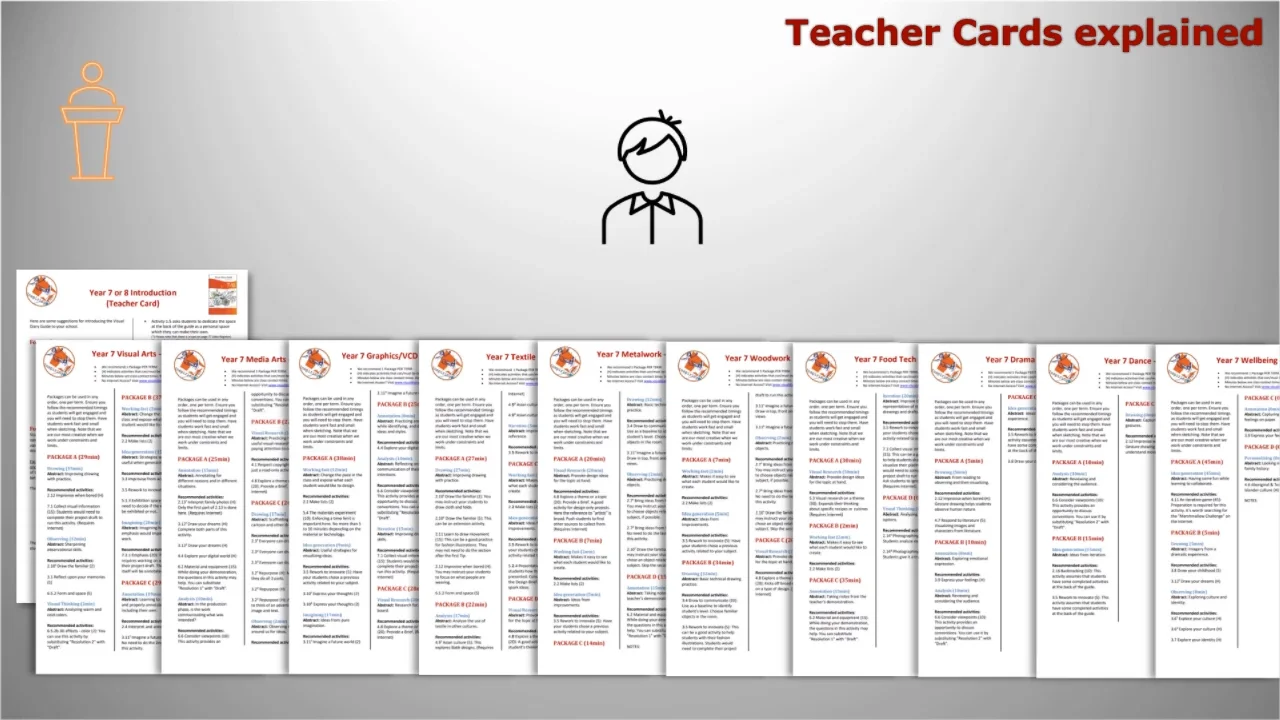Being creative & innovative has become essential for well-paying jobs
We believe middle-school Art and Design departments are the key to focus on these skills
The question is: how can we help teachers to help students with this?
It is uplifting to see there are a lot of people, companies and institutions trying to implement measures to make the next generation more creative and innovative. However, most opt for a top-down approach which, one way or another, faces passive pushback from the very people who matter: teachers.
Teachers are busy people and they have to prepare well in advance to deal with time pressures. Hence, change is not something that is easy to implement for them. For high-fidelity top-down solutions this can be a problem.
Yet change is everywhere. Given that each teacher’s situation is more or less unique, we need a solution that works even if some teachers in the same department cannot participate. We believe the best way to get them on-board it is to make changes voluntary but ensure that it is the kind of change most teachers would volunteer for.
What do we do?
We take a bottom-up approach by placing teachers and students at the centre of our solution
It is all about convincing students that everyone can be creative regardless of whether they feel "artistic" or not!
With a simple but powerful student workbook – the Visual Diary Guide – we’ve managed to convince students that they too can be very creative and innovative. We’ve also managed to convince teachers that – with just 5 minutes per month – they can contribute to building solid habits around creativity. Because the same student takes many subjects along the way from the same department, we’ve given the workbook to them and asked all those subject teachers to invest just 5 minutes a month. This will result in many many hours of practice for the student.
We have avoided prescriptive solutions by giving teachers freedom. Whatever way they choose, they get results.
For Art and Design departments, this means teachers can now easily balance between Teaching Art and Teaching to work like an Artist.
So far, it’s been yielding great results in more than 100 schools. In fact, there are now even schools using this in Science, English and Language classes. The scope is endless.
“After 5 years of use across our year 7 to 10 cohorts, including Arts and Design, we are seeing some remarkable results with students drawing and annotating really well and owning their own creative process. It is now part of our Unit designs and I realize that we are really teaching our students to work like an artist. Yet, in a large team like ours where every teacher has their own style, the guides also provide the perfect flexibility. It is very rewarding and sets students up beautifully for year 11. Clearly, middle years students can learn to work independently as early as year 7.”
Kellie Muller – Visual Arts Specialist Leader
“The Visual Diary Guide has been a GODSEND during Remote Learning. I completed a series of activities with my junior art classes and changed some of them, e.g. Photographing Food into graded assessment tasks.
The tasks contained in the VDG were achievable and accessible to all students. They were also easy to modify for differentiated learning.”
Sandra Greed – Art Teacher“We have really been enjoying using the Visual Diary Guides. One of my own children is in the class and I am able to see it as it’s working. It has been an excellent learning tool.”
Lizette Richards – Classroom Teacher“Hilary, your Visual Diary Guide has been such a huge help and very popular with my students. It’s been soooo very helpful during the distance learning as I encouraged the students to complete the home tasks! There are a variety of successes and the opportunity was too great to miss. Thanks for all your help. I will advise for this to be added to the student book list.”
Linda Bryan – Head of Art DepartmentFeedback after 2 years of use
“This year, I had a chance to compare results between two groups of students: one with the guides and one without. There was a stark difference. The ones with the guides were more driven to investigate on their own, confidently approached tasks, produced individualized work and developed their own aesthetic. Students were engaged and even excited to do the homework! In summary, they had the skills needed to produce good work. All of this created a positive air around the subject. In contrast, the other group required a lot more attention, developed competitive tendencies (as their work became versions of the same idea) with some students switching off. Significantly, since using the guides, retention has increased.”
Stacey Coralde – Head of Art DepartmentFeedback after 1 year of use
“It took a little to get used to, but after using the guides for a year, I see it really helps students to observe. It provides a positive air around the art subjects, which is wonderful to see.”
Stacey Coralde – Head of Art Department“Visual Diary Guide is working fabulously well in Home Economics, Dance, Drama, Indonesian and Personal Development classes. The teachers I asked to join me in this endeavor have taken it and rolled with it. It is amazing.”
Madeline Lynam – Middle Schooling Coordinator“As an experienced teacher, at first, I was not sure how to integrate this into my program. I started with the build-up activities and followed the initial advice from the training: keep drafts small & rough, and get students working fast! I used music to stop the students when the recommended activity time elapsed. Working fast is really successful, keeps them motivated and brings out their creativity (and they’ve learnt to listen to my voice). Now that they can work fast, it is possible for me to shift to a student-led approach, which the project framework in the guides scaffolds. I quite like it.”
Kate Langridge – Art teacher“I have to say the Year 10 class that has had the books for two years now do indeed know how to annotate and explore media and ideas before embarking on projects. The guides have indeed fulfilled the purpose I acquired them for.”
Catherine Grimwood – Visual Arts Teacher“The books have been amazing and I am getting far more out of the students in terms of filling their visual diaries than I did before! It is totally awesome!”
Laura Morley – Head of Art Department“There is a lot happening in each book and the layout helps to create a sense of fast-paced thinking, then deeper thought, followed by connection of ideas, resolution then reflection. I really like the way that the language and focus changes with each year level, particularly with the emphasis on creativity being shifted from a personal expression standpoint to being presented as an advantageous trait in future careers. This addresses the issue of students frequently underappreciating the value of creativity and failing to realize the vast number of employment opportunities in creative industries. Top stuff!”
Michael Kapadia – Head of Art and Technology Departments
What do you get?
As a district manager, you get to implement an effective solution to improve creativity and innovation which teachers will want to participate in
It will not interfere with any top-down solutions already in place
Students will get digital access to the Visual Diary Guides for the duration of their need. Teachers are supported with lots of free material with ongoing support.
Students can access the guides from any device they have.
![]()
Once a district decides to recommend the Visual Diary Guide, we help with the rollout to participating schools. These include:
- Working with each school to help activate the digital licenses. This can happen in different ways:
- If the school or the district is paying for the students’ copy, then a single activation code will be provided for all student.
- If the students are paying, they will be able to buy it from our website once the school registers with us. An activation code will be sent to the student directly.
- If a distributor or management company is involved, we train them for the activation process.
- If a Learning Management System (LMS) is involved, please talk to us. Integration options may be available for an extra fee. Generally speaking, schools try the guides for a couple of years before moving into a more permanent arrangement.
- Teachers get a free special activation code that allow them to access all teacher resources as well as a copy of the guide.
- Working with each school to train the teachers, if requested. This is a free service and we recommend it to get the most of the guides.
- Inviting teachers in these schools to join our exclusive The Teacher Circle forums.
- Provide life-time support to all teachers. Any teacher resources – current or future – are made available for free.
Teacher Cards are a single-page compilation of Visual Diary Guide activities suitable for different subject teachers. The journaling activities are grouped in areas such as:
- Annotation skills
- Drawing skills
- Visual Research
- Analysis
The creativity activities are grouped in areas such as:
- Observing skills
- Visual Thinking skills
- Idea Generation skills
- Iteration
- Working fast

I am a Coordinator
You’ll find it much easier to convince multiple subject teachers to work together on creativity.
I am Head of the Department/Chairperson
Your students will have much better skills in High School, especially the ability to work independently and generate their own ideas. You’ll notice the more this is established, the more your department’s profile will increase.
I am a student
You’ll be doing a lot of fun activities that push you to think quickly and develop ideas. You’ll get an opportunity to play a bit, maybe, even in the middle of a Maths class!
I am a parent
You’ll see the extent of the important work that goes on in your child’s art classes. Also, for the price of a loaf of bread, you’ll find activities in your child’s school bag that even you may want to do yourself (that’s what parents are telling us!).
I am a Visual Arts teacher
You’ll quickly notice your students are engaging more, filling their visual diaries with great annotations and working faster. Gradually, you’ll notice that they can work independently, that they like your subject more and their work becomes much more interesting.
I am a non-Visual Arts teacher
Doing activities from your subject’s perspective will give students a deeper experience and understanding. We help you to choose activities to suit your class with our Teacher Cards. You’ll notice your students enjoy doing the short activities as it breaks up the regular delivery a little. You’d hardly need art teaching skills. In addition, the mobile nature of the guide is good for excursions. Overall, you’ll be contributing to an accumulative process.
I am a non-Visual Arts teacher tasked with teaching Visual Arts classes
We provide all the training at no charge and provide the support material you would need to make delivering art projects easy and enjoyable. The guides do have a Project Blueprint that would make designing projects very easy. This is complemented with activities designed to be fun and engaging.
I am the Principal
You’ll find your students literacy, creative and critical thinking skills will improve before High School. You’ll be pleased to find a resource which can facilitate a simple way for staff to work together and across departments.
We comply with  and enhance:
and enhance:





